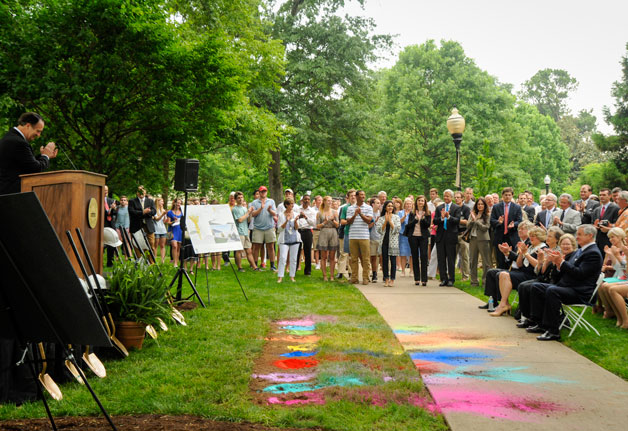As one of Wofford’s newest alumnae from the Class of 2015, I have spent much of this first postgraduate summer reflecting on my four years at Wofford.
While my mind often has been occupied by the expected nostalgia-driven memories of college, an equal part has been filled with excitement for the future of my alma mater and ideas of what the Strategic Vision will mean for us all.
A painter since childhood, I have always known that the arts would play an important role in my education and career. However, as a senior in high school, my decision to choose Wofford over a college of fine arts became a simple one with the counseling of important faculty members such as Kris Neely ’02 (assistant professor and coordinator of studio art). I quickly became a believer in the lifelong importance of a liberal arts education. This year, a senior again, my Wofford mentors helped me make yet another life-changing decision: to pursue a master's of fine arts in studio art from American University in Washington, D.C. Because of my undergraduate experience and the people who have helped shape it, I have the privilege of experiencing the best of both worlds: a liberal arts education as well as a studio-based experience in graduate school.
For future students, however, artists or not, Wofford will offer the best of both worlds from the moment they first visit our campus. Since its founding in 1854, Wofford has excelled in the classic areas of learning. As the college continues to grow, the Rosalind Sallenger Richardson Center for the Arts will enhance and deepen these same intellectual values. Art history students will study the same techniques and artistic movements that many have before them, but in addition to learning about Impressionism or Cubism in the classroom, they also will have a studio and paintbrushes to experience the history of art-making in a much different way. Students of philosophy and literature will continue to read influential and traditional essays and plays, but now they will have a chance to see them performed, or even take part in performing plays themselves as if they were part of an ancient symposium. Students of biology, so accustomed to the hands-on experience in a lab, will have the chance to thrive in a new department of kinesthetic learning. Even students of economics and math, with their passion for detailed analysis, might find inspiration through the arts to visualize their sciences in new, original ways.
The new building’s physical location on campus also speaks to its broad impact. Tucked diagonally across the lawn from Main Building right beside the Roger Milliken Science Center, the Rosalind Sallenger Richardson Center for the Arts will seamlessly connect every realm of learning and foster the growing diversity of our student body. Most importantly, the Rosalind Sallenger Richardson Center for the Arts will continue to encourage the interdisciplinary sharing of ideas across campus, which I have discovered to be the most significant, exciting and rewarding aspect of the liberal arts experience at Wofford.
While I’d love to experience the wonders of the new building for myself, I’ll be content to return as a proud graduate and see how the new center for the arts is transforming our campus community. Who knows, maybe I’ll be back here one day teaching or exhibiting my works. The possibilities are limitless, thanks to the power of the gift.
by Mills Brown ’15
